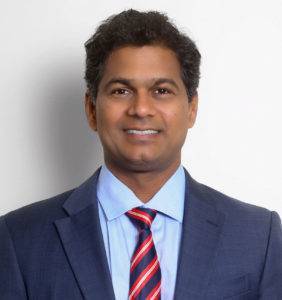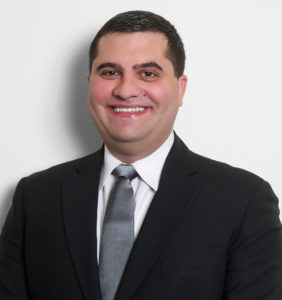
Denied Entry Because of Day 1 CPT
Overview of F-1 and F-1 Work Authorization
People coming to the United States to study typically enter the US on an F-1 student visa. In addition to allowing the F-1 visa holder to study in the US, there are options to work on an F-1 visa. There is curricular practical training (CPT) which allows the student to work in order to pursue training that is directly related to the student’s major of study and the training is an integral part of the school’s established curriculum. CPT is traditionally done during the school year and is often times on the job training that is used to count as credit. Following graduation, students can apply for twelve months of optional practical training (OPT) which allows the F-1 visa holder the ability to work so long as the training relates to the student’s major course of study. If the F-1 visa holder graduated in a STEM degree program, they can apply for an additional twenty-four month OPT extension called STEM OPT.
F-1 Work Authorization Limitations and Status Violations
These work authorizations are not without limits and are not automatic. 8 CFR 214.2 (f)(10) states that “a student may be authorized 12 months or practical training, and becomes eligible for another 12 months of practical training when he or she changes to a higher education.” In the past, USCIS has interpreted this to only apply to OPT; however, recently, it has been applied to CPT as well. Essentially, USCIS has been interpreting this to mean that if you have used twelve months of OPT, you cannot, or at least should not, get CPT at the same degree level without it being a violation of F-1 status.
Given the limited number of H-1B visas, the visa lottery, and the increased delays and denials of H-1B changes of status petitions, many F-1 visa holders run out of their OPT and STEM OPT work authorization before they can get on an H-1B visa. This causes many F-1 visa holders to look for continuing their work authorization in order to support their families. One way this is happening is with Day 1 CPT at the same degree level. As a note, one common misconception is that getting an MBA is a higher degree level than a computer science Master’s Degree. In the United States, an MBA is considered the same degree level as all other master’s degrees.
While Day 1 CPT after OPT is issued, and “authorized” by certain schools, it is something F-1 visa holders should still be wary of. Often times the schools only require them to go to school once a month or once a semester. Day 1 CPT after OPT is offered by very limited schools and the Department of Homeland Security (DHS) is aware of the schools and is keeping a close eye on the students. DHS realizes that this is a status violation based on the above regulation, and even though the school authorized it, the CPT after OPT should not have been issued. In addition to violating the above regulation, DHS has been relying on the fact that Day 1 CPT students are not adhering to the purpose of the F-1 visa. That is, the students are using the F-1 visa to work rather than study as they should be. Often times these Day 1 CPT schools only require students to attend class monthly, or once a semester, and they spend more time working rather than doing any studious activities.
As noted above, the major issue is the students getting Day 1 CPT at the same degree level. This has led to some universities creating the opportunity for Day 1 CPT at the Ph.D. level. F-1 visa holders should still be cautious with this opportunity. While it does meet the letter of the regulation, this could still be seen as a violation of F-1 status. Remember, F-1 status is for studying in the United States and not working. While working can be an integral part of the education process, if an F-1 visa holder is working 38 hours a week and going to school for 2, USCIS may still determine this is a violation of F-1 status.
Recent Trends in Day 1 CPT from USCIS
As noted above, USCIS has been taking the stance that the use of Day 1 CPT after the F-1 student has completed OPT is a violation of F-1 status. Many businesses, F-1 visa holders, and business immigration attorneys have seen a significant amount of change of status denials for students that partake in Day 1 CPT after OPT. A new trend has been that USCIS is clearly digging deeper into the DHS records to determine if the F-1 student has properly maintained status.
Recently, USCIS has been sending RFEs, for cases that were filed as a change of status when the F-1 student was on STEM OPT, and once their STEM OPT or cap-gap period has ended the student is switching over to Day 1 CPT in order to maintain work authorization. This is creating a violation of F-1 status. The new trend from USCIS however, is that they are catching this switch even if there has not been a disclosure by the Beneficiary, Petitioner, or the attorney of the change to CPT. These RFEs are being sent stating that “according to DHS records” the Beneficiary is enrolled in a new program and has started on CPT. In these RFEs, USCIS is requesting a list of documents to show evidence that they are maintain a full course of study and to prove that the CPT is an integral part of the education.
While USCIS lays out evidence that can be provided for the RFE, it is a borderline trap. As noted earlier, there are cases adjudicated by USCIS for Day 1 CPT are coming with a denial of the change of status and a determination that F-1 status was violated.
Day 1 CPT Visa Holders Denied at Port of Entry
Within the last couple of weeks, there have been reports of F-1 visa holders on Day 1 CPT that have been denied entry into the United States by Customs and Border Patrol (CBP). This is a very new trend that has not presented itself before. It is likely that like USCIS, CBP is going into DHS records to see what the records show for the F-1 visa holder.
It is likely that once the CBP officer sees the F-1 visa holder is attending a second masters and have Day 1 CPT, especially from one of the schools that DHS is aware that offer Day 1 CPT, they are asking the F-1 visa holder for additional information. The officer most would then ask for information about the course work, the educational program, how often they attend school, how often and how much they work, etc. Additionally, it is likely the officer is likely to notice the address the visa holder resides at and the address of the school and question the distance and how the visa holder is attending college. What has gathered from those that have said they are denied at the border is that the CBP officer is concluding that the F-1 visa holder is not entering the US to study, but rather work, and should not be admitted as a student visa holder.
Conclusion
Those that are on Day 1 CPT should contact an attorney to discuss how to fix their status violations. Further, they should be sure to disclose this to the attorney when filing for any change of status petitions to the attorney can properly advise on a strategy that can be best for their situation.
By Rahul Reddy and Steven Brown
Rahul Reddy is the founding partner of Reddy Neumann Brown PC His practice covers employment-based immigration, in which he represents corporate clients in far-ranging industries.
Steven Brown is an attorney in the firm’s H-1B Department and represents our business clients throughout the entire H-1B, H-4, and H-4 EAD process. Additionally, Steven works with clients with Department of Labor Compliance included assistance with wage and hours investigations. Steven prides himself in being able to provide his clients with creative solutions to complex immigration problems


